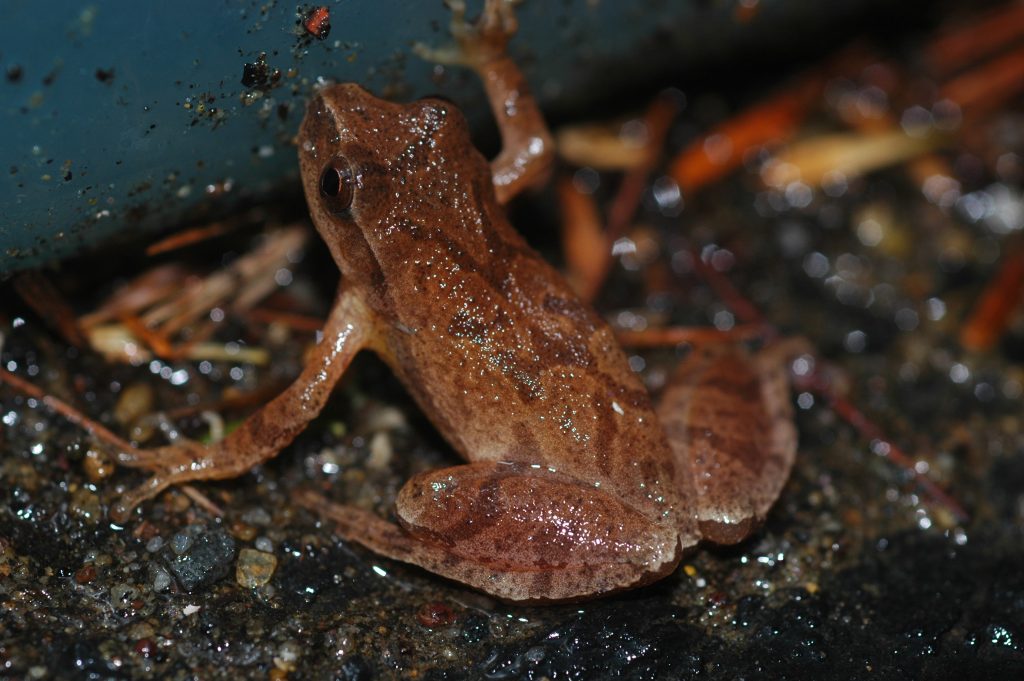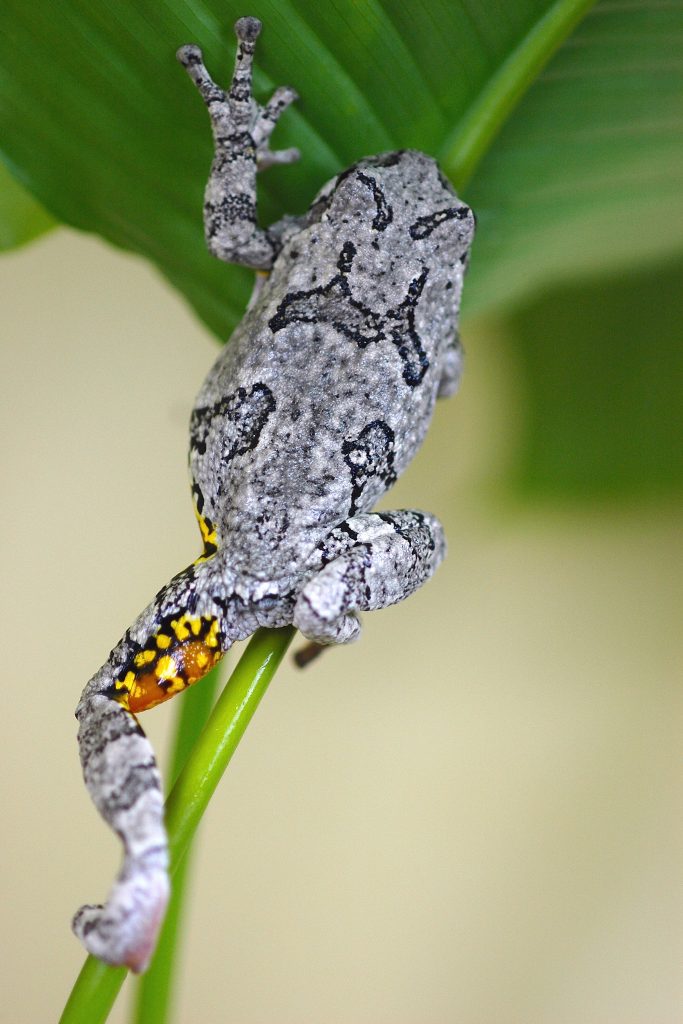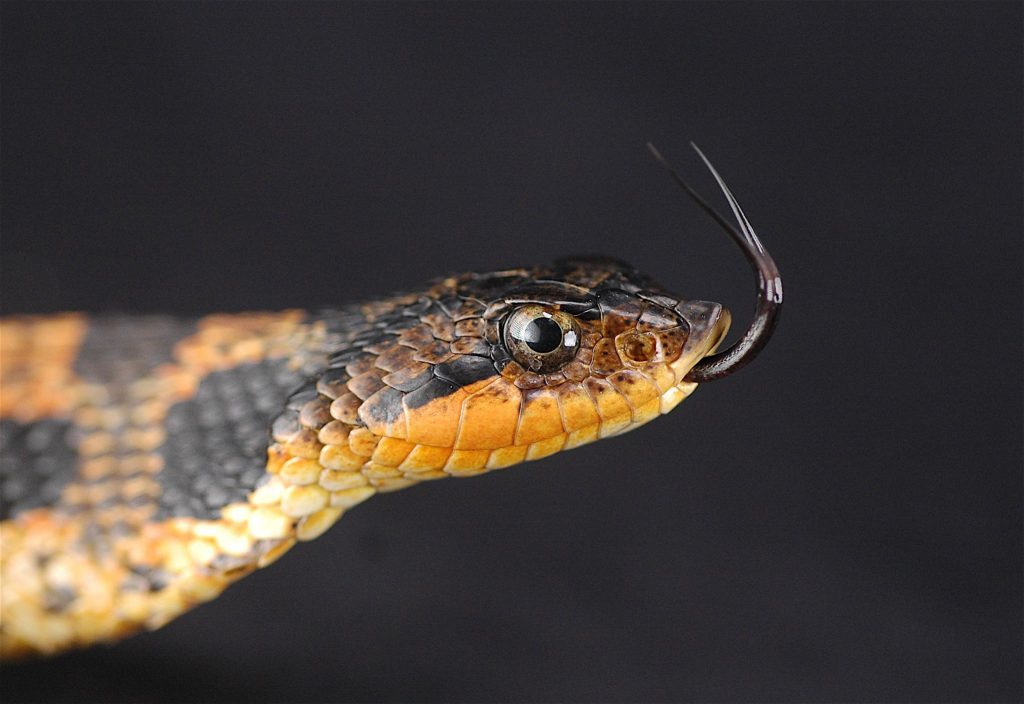This post is part of a series about the work of faculty members who are seeking to understand the impact of climate change here in Connecticut, and to work toward environmentally sustainable solutions.
Notes from the field
At dusk on a cool, damp evening in late spring, a group of UConn students and researchers suit up in waders and descend upon a flooded meadow, just off the Storrs campus in the UConn Forest. The going is slow, and a little treacherous as the destination is more flooded than usual this evening. Tangled mounds of grass and fallen tree limbs await in the murky water, to trip the unwary.
Studies are showing that a connection with nature is important for our health, yet we have this partition between us and the natural world. How can we preserve what we don’t appreciate or understand? — Kurt Schwenk
The outing is part of a summer course in Field Herpetology and an opportunity for ecology and evolutionary biology professor Kurt Schwenk to enlist help from students locating the vocal spring peepers, Pseudacris crucifer, in the act of mating.
Schwenk primarily studies the functional morphology and evolution of lizards and snakes, but lately he’s gotten interested in the peculiar way that frog larvae (tadpoles) breathe air, despite having perfectly good gills. He’s using the class tonight to help him determine the feasibility of obtaining spring peeper eggs from mating pairs. Before heading into the chilly waters, he tells the group to keep their eyes peeled, as the small frogs will pair up and float at the water’s surface, in a mating behavior called amplexus. Almost immediately the students start looking around, searching for the tiny pairs of frogs.
After a signal for the group to be quiet, the frogs close by eventually start to sing again, making it easier to locate them despite their extremely effective camouflage. But for the students, pausing also means sinking a bit further into the mud.

Soon, a peeper is caught, and while he carefully holds the squirming frog, Schwenk explains that ‘crucifer’ in the frog’s Latin name comes from the markings on its back that resemble a cross.
“You see the extra skin on the frog’s throat,” he points out to the group gathered around him, “this fills with air and is important when they vocalize.”
As the evening draws on, the frog calls grow into an engulfing and mesmerizing chorus. The high pitched ‘cheeruping’ of the peepers is met with a cheerful and lower-pitched trilling of the gray tree frog. These frog calls are a familiar sound of spring in Connecticut.
The chorus is interspersed with occasional exclamations from students at an interesting find, or expletives at the perilous footing or boots lodged in the sticky mud.
“Oh no, my waders are filling up! I’m soaked,” says one student, after his foot caught a divot.
Watch video of a gray tree frog calling, with a loud tree frog chorus in the background, as well as a few green frogs calling:
But these obstacles don’t stop the students’ eager pursuit of wildlife, nor dampen the group’s excitement.
Schwenk says seeing his students’ enthusiasm is one of his favorite things about teaching. But he notes that in the 28 years he has been at UConn, the outings have changed, as the animals they search for become fewer and fewer.
Schwenk says that in Connecticut, the declines he has noted are most likely due to human encroachment, habitat fragmentation, and habitat destruction, as well as climate change.
“I’m not a climate scientist by any stretch of the imagination,” he says, “but I have noticed clear changes in some species, and the big question is ‘why?’”
“A perfect example is in Glastonbury with the Timber Rattlesnake,” he says. “Developers build on ancestral foraging grounds for the rattlesnakes, and then people wonder why they have snakes in their yards. It’s inevitable that residents will come into contact with them, and we have seen the snake populations decline.
“We need to educate people about these snakes, who are also residents, and not pests,” he adds. “In fact, they help keep rodent populations in check.”

The box turtle is a species that Schwenk speculates may be declining due to climate change. “In the whole time I have been in Connecticut, I’ve only seen one box turtle, and it had just been hit by a car. When I was growing up they were abundant, and they’re now becoming very, very rare.”
Another troubling trend he mentions is that of the spring peepers, whose familiar song is no longer simply a springtime phenomenon.
“We have winters now in which we either have several feet of snow, or 65 degree days – when the frogs and snakes come out. That would have been unheard of 20 years ago,” says Schwenk. “For the frogs, the main danger is that they expend energy calling that they need in order to make it through the winter. As it is, many of them won’t make it through.”
Those worries seem miles away out here in the marsh, where the group can see the light signature from campus, even as they are chest deep in water and surrounded by wildlife. Despite its proximity to campus, the marsh demonstrates that nature is all around us – if you look. In that one outing, students spotted grown frogs, tadpoles, bats, beavers, ducks, swallows, snakes, turtles, spotted newt eggs (they had hatched), and fishing spiders, to name just a few.
Watch video from the Fenton River, with audio of spring peepers as well as wood frogs calling:
And the marsh itself is testament to the tendency toward change in nature. Schwenk says during most of the time he has been at UConn, the marsh has been a meadow. This year, however, the resident beavers have extended their dam and flooded it. That’s not necessarily a bad thing, he says, as the flooding will kill the shrubs and small trees of the encroaching forest, helping keep diversity in the landscape.
The Importance of Getting Outside
Many of these students have previously spent very little time outdoors, and seeing how gung-ho they are is exciting, says Schwenk. “Whole generations are growing up without nature, they’re not getting exposed.”
Although tentative at first, the students quickly became fascinated and hungry to learn more.

When toward the end of the outing the course instructor, second year master’s student Jack Philips, shouted “There’s a snake in the water!”, most rushed toward, rather than away from, him in order to sneak a peek or perhaps hold the snake.
Even if spending an evening handling snakes and frogs isn’t your idea of a good time, it’s important to get outside to develop an appreciation for nature, says Schwenk. With knowledge and appreciation, people are better equipped and more likely to preserve these resources.
“Studies are showing that a connection with nature is important for our health,” he says, “yet we have this partition between us and the natural world. How can we preserve what we don’t appreciate or understand?”
To learn more about the importance of preserved spaces, such as the UConn Forest, along with smart planning and development, both of which are crucial for wildlife preservation, go to this article on Preserving Green Spaces in Connecticut’s Changing Landscape.
To learn more about local wildlife, check out iNaturalist, an online community where researchers and amateur naturalists alike post pictures, contribute data, and pose questions.
Listen to the writer, Elaina Hancock, discussing the climate change series with the UConn 360 podcast:



